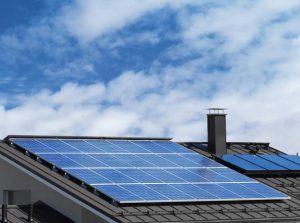What's the Optimal Temperature for Solar Panels?
When diving into the world of renewable energy, understanding the intricate dance between technology and nature is key. Solar panels, the frontline warriors in the battle for a greener future, operate under a golden rule: the cooler, the better. But what exactly is the optimal temperature for solar panels, and why does it matter? Let's get into the nitty-gritty, with hard numbers and facts, and shed light on this pivotal aspect of solar energy production.

The Sweet Spot: Performance vs. Heat
First off, it's crucial to grasp that solar panels convert sunlight into electricity more efficiently at cooler temperatures. The ideal operational range for most solar panels is between 15°C (59°F) and 35°C (95°F). However, the magic number—where these panels hit their peak efficiency—is typically around 25°C (77°F). For every degree above this point, the efficiency of a solar panel can drop by about 0.5%.
Why the dip? It boils down to physics. Higher temperatures cause the semiconductor material in the solar cells to become overly excited, leading to less efficient electron movement. Simply put, too much heat means the panel can't convert as much sunlight into usable energy.
Real-World Implications: Not Too Hot, Not Too Cold
In regions that regularly experience scorching temperatures, solar panels can get much hotter than their optimal range—sometimes reaching up to 65°C (149°F) or more. This heat hike can lead to a performance drop of 10% to 25%, a significant cut from their potential output. On the flip side, cooler climates might not wrestle with overheating, but they face their own challenges, like reduced sunlight hours or snow cover.
Tech Innovations: Keeping Cool Under the Sun
The industry's response to the heat challenge has been nothing short of innovative. Advances include installing solar panels a few inches above the roof to allow for airflow, using materials that reflect infrared radiation to keep the panels cooler, and even integrating liquid cooling systems for high-performance setups.
The Bottom Line: Maximizing Efficiency
Understanding the optimal temperature for solar panels is not just academic; it's practical. When installing solar panels, considering local climate conditions, panel placement, and even the color of the roofing material (darker colors absorb more heat) can make a difference in performance.
In sun-drenched areas, opting for panels with a higher temperature coefficient can help mitigate efficiency losses. This coefficient measures the panel's performance change with temperature. Lower coefficients mean less efficiency drop-off in hot weather.
Harnessing the Sun with Precision
The optimal temperature for solar panels shines a spotlight on the delicate balance between technology and the environment. It underscores the importance of strategic planning and innovation in harnessing solar energy effectively. As the solar industry continues to evolve, understanding and optimizing for these thermal dynamics will be crucial in maximizing the potential of solar power, propelling us toward a more sustainable and efficient future.
